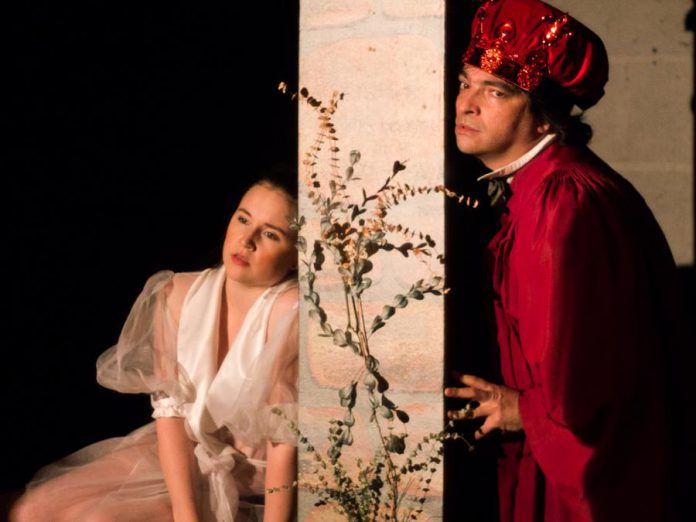
Much has been written about Lewis Carroll and his most famous piece of literature, Alice in Wonderland, over the decades. From feature films to comic books to video games, it has been reexamined, rebooted, and reimagined so often that it seems like there’s nothing new to say.
However, first-time playwright Lindy Powell gives a very fresh and extremely original look at Carroll and his disturbing relationship with his muse Alice in Ruse of the Romantic, which premieres this weekend at The Theatre on King (TTOK) in downtown Peterborough.
Directed by Kate Story, Ruse of the Romantic was a finalist in TTOK’s 2014 Playwrights Festival and it’s a whimsical yet disturbing look at the loss of innocence and sexual exploitation in the arts.
History remembers Lewis Carroll (born Charles Lutwidge Dawson, 1832-1898) for his surreal poetry and his two famed children’s books: Alice in Wonderland and Alice Through the Looking Glass. However, what is often overlooked is Carroll’s 24-year career as a photographer.
With a personal studio at his disposal, Carroll primarily used young girls as his subject matter. Although he photographed various young girls of different ages and backgrounds, his literary muse Alice Liddle and her sisters were frequent subjects of his photos.
Recent critics examining Carroll’s photography have noted his young models are highly sexualized and have deemed some of his images to be early examples of child pornography.
In Ruse of the Romantic, Lindy Powell boldly examines Carroll’s relationship with Alice Liddle primarily through his photography, along with references to his literary works. The result is a disturbing image of Lewis Carroll that Wonderland fans would much rather forget.
Ruse of the Romantic is surrealistic in nature and leaves the audience often asking more questions than finding solid answers.
The show revolves around a young muse named Celia, played by Elizabeth Moody. Pretty, mischievous and rebellious, Celia is at that awkward age between still being a little girl and starting to discover her budding sexuality. Overlooking Celia are three other characters: Bit (Ryan Kerr), Sty (Meg O’Sullivan), and Canon (Matt Gilbert).

After a provocative slide show of Carroll’s photography — effectively presented with the Rolling Stones “Stray Cat Blues” as a musical backdrop — the show changes, with Elizabeth Moody playing Alice Liddle and Matt Gilbert taking the role of Lewis Carroll. Although the action is innocent enough, there’s a disturbing sexual subtext in the scene that leaves the audience deeply unnerved.
Elizabeth Moody is a brilliant choice to play Celia. Looking far younger than she actually is, Liz plays a young girl who is not yet a woman but is starting to look like one. Her performance is a series of extremes, as she goes from being cute to sexualized to whimsical to disturbed.
A brilliant performer and dancer, Liz engages the audience full on, giving an often-funny performance that is also deeply disturbing. With her extremely provocative role, Liz represents the forgotten young girls who are sexualized by art and culture, but are overlooked by the public who would rather idolize the artist instead.
Matt Gilbert gives a disturbing and larger-than-life performance as Canon. The moment he walks on the stage, a dark aura of perversion and mental illness follows him, and it’s clear that he is a true threat to Celia. Who he is and his connection to Celia is never explained, but when left to the imaginations of the audience, it’s probably best that we never know.
Using various art techniques such as dance, movement, music, imagery and drama, Ruse of the Romantic is a multimedia performance that delves into the surreal to reveal a disturbing reality of sexual manipulation and exploitation in the art world. Although the play focuses on the Victorian era, this sexual exploitation of young girls still exists today.
Ruse of the Romantic is an important play, and I commend Lindy Powell for bringing such a controversial and often-ignored subject to the forefront in an entertaining and thought-provoking production.
Ruse of the Romantic runs from Thursday, May 28th to Sunday, May 30th at 8 p.m. Admission is $10 at the door.


























